Just short of 220 calves were on offer in Bandon mart last Monday. This is 50 calves back on the same sale last year, but the same as the 2022 sale. Storm Isha may have had an impact, as numbers in the first few sales of the year were running ahead of other years. What was of note was that numbers of Friesian bull calves weren’t what they used to be. Mart manager Sean Dennehy told the Irish Farmers Journal this shift has been taking place gradually over the last number of years and isn’t a trend that began in 2024.
“People think it’s only happening this year, but it’s happening about two years. When I came here first it was all Friesian bull calves early on, similar the year after, but last year there was a marked difference, with a lot of Angus and Hereford calves coming through earlier in the year.
“Before we used to sell Friesian bulls in groups of 10 to 15 and that’s gone. You knew Friesians would provide the bulk of numbers in February, but that won’t happen now because they’re there, but not in the same numbers like before.”
Something else of note was that prices for lighter calves were quite firm.
The bulk of Angus and Hereford crosses between 55kg and 70kg sold in a price range from €230 to €150.
Lighter calves rarely broke the €150 mark.
Regardless of breed, buyers are willing to pay a higher price for those December- and early January-born calves.
That price tends to be significantly ahead of prices for the same type of calf in March and April for a stronger calf.
This was applied particularly to heavier Angus-cross and continental calves.
The sale topper was a three-week-old Charolais-cross calf that weighed 101kg and sold for €585.
Although their numbers were small in comparison to Angus calves, continental calves regularly made in excess of €400.
Traditional beef breed calves – both bulls and heifers – that weighed over 75kg and were between three to five weeks of age, generally sold from €250 up to a top price of €360.
Friesian bulls were relatively scarce and demand was good for those over 70kg, with a top price of €215 paid for a 98kg calf.
Those under 70kg tended to sell for €1/kg.
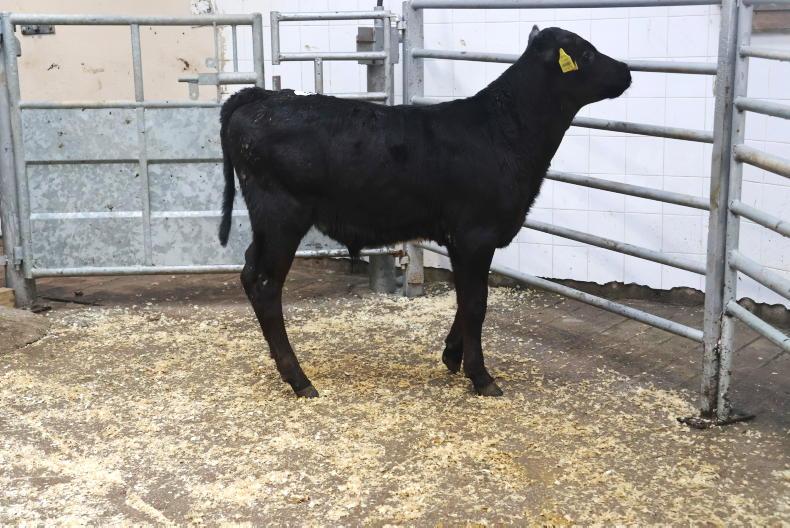
This five-week-old Angus-cross bull calf weighed 97kg and sold for €360.
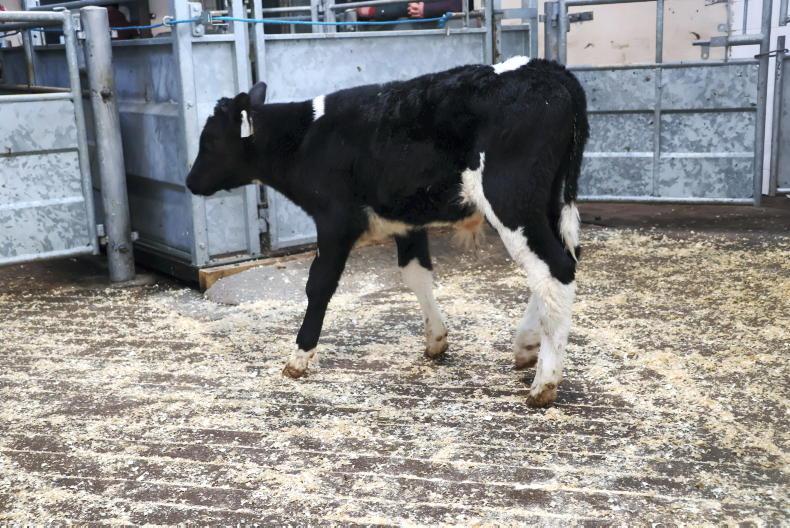
This eight-week-old Friesian bull calf weighed 88kg and sold for €150.
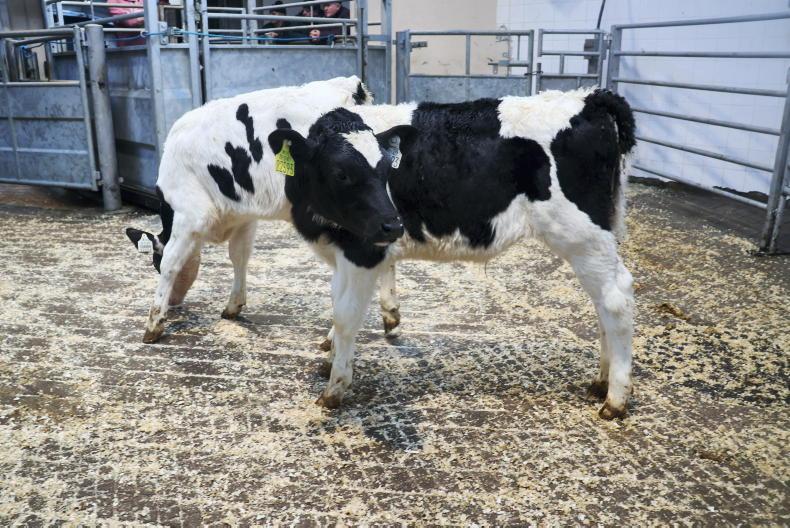
These six-week-old Friesian bull calves weighed 73kg and sold for €110.

These five-week-old Hereford-cross bull calves weighed 88kg and sold for €220.

These three-week-old Charolais-cross heifer calves weighed 86kg and sold for €475.

This three-week-old Charolais-cross bull calf weighed 101kg sold for €585.
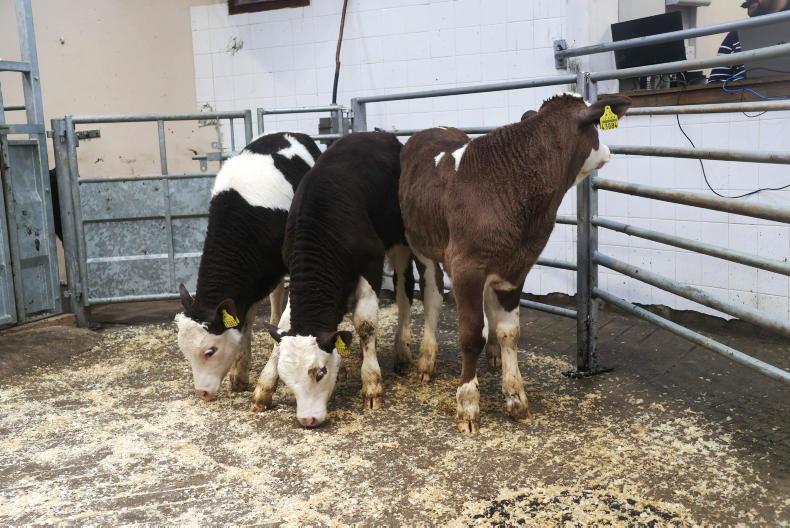
These ten-week-old Simmental-cross bull calves weighed 116kg and sold for €465.

This nine-week-old Angus-cross heifer calf weighed 77kg and sold for €275.
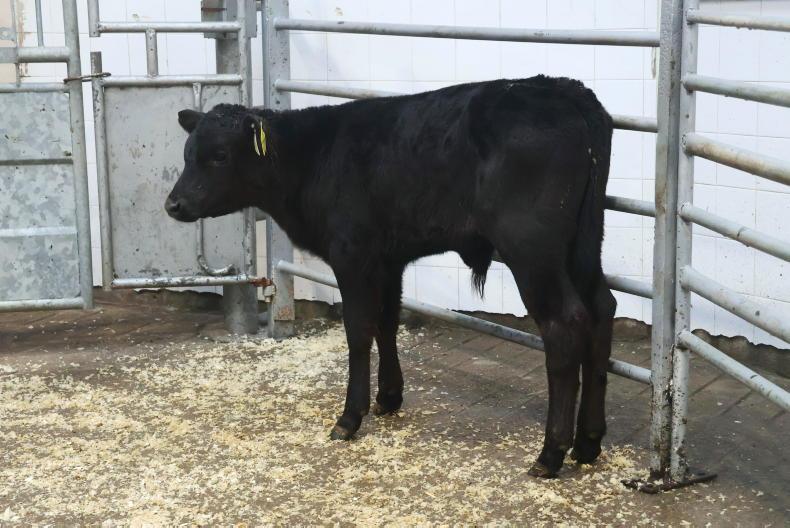
This one-month-old Angus-cross bull calf weighed 77kg and sold for €255.

This five-week-old Friesian bull calf weighed 85kg and sold for €135.
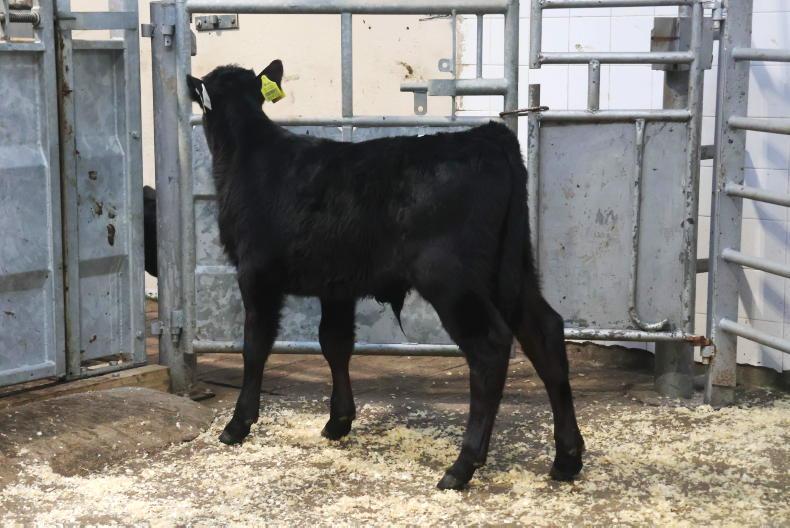
This five-week-old Angus-cross bull calf weighed 78kg and sold for €275.
Just short of 220 calves were on offer in Bandon mart last Monday. This is 50 calves back on the same sale last year, but the same as the 2022 sale. Storm Isha may have had an impact, as numbers in the first few sales of the year were running ahead of other years. What was of note was that numbers of Friesian bull calves weren’t what they used to be. Mart manager Sean Dennehy told the Irish Farmers Journal this shift has been taking place gradually over the last number of years and isn’t a trend that began in 2024.
“People think it’s only happening this year, but it’s happening about two years. When I came here first it was all Friesian bull calves early on, similar the year after, but last year there was a marked difference, with a lot of Angus and Hereford calves coming through earlier in the year.
“Before we used to sell Friesian bulls in groups of 10 to 15 and that’s gone. You knew Friesians would provide the bulk of numbers in February, but that won’t happen now because they’re there, but not in the same numbers like before.”
Something else of note was that prices for lighter calves were quite firm.
The bulk of Angus and Hereford crosses between 55kg and 70kg sold in a price range from €230 to €150.
Lighter calves rarely broke the €150 mark.
Regardless of breed, buyers are willing to pay a higher price for those December- and early January-born calves.
That price tends to be significantly ahead of prices for the same type of calf in March and April for a stronger calf.
This was applied particularly to heavier Angus-cross and continental calves.
The sale topper was a three-week-old Charolais-cross calf that weighed 101kg and sold for €585.
Although their numbers were small in comparison to Angus calves, continental calves regularly made in excess of €400.
Traditional beef breed calves – both bulls and heifers – that weighed over 75kg and were between three to five weeks of age, generally sold from €250 up to a top price of €360.
Friesian bulls were relatively scarce and demand was good for those over 70kg, with a top price of €215 paid for a 98kg calf.
Those under 70kg tended to sell for €1/kg.

This five-week-old Angus-cross bull calf weighed 97kg and sold for €360.

This eight-week-old Friesian bull calf weighed 88kg and sold for €150.

These six-week-old Friesian bull calves weighed 73kg and sold for €110.

These five-week-old Hereford-cross bull calves weighed 88kg and sold for €220.

These three-week-old Charolais-cross heifer calves weighed 86kg and sold for €475.

This three-week-old Charolais-cross bull calf weighed 101kg sold for €585.

These ten-week-old Simmental-cross bull calves weighed 116kg and sold for €465.

This nine-week-old Angus-cross heifer calf weighed 77kg and sold for €275.

This one-month-old Angus-cross bull calf weighed 77kg and sold for €255.

This five-week-old Friesian bull calf weighed 85kg and sold for €135.

This five-week-old Angus-cross bull calf weighed 78kg and sold for €275.

















 This is a subscriber-only article
This is a subscriber-only article










SHARING OPTIONS: